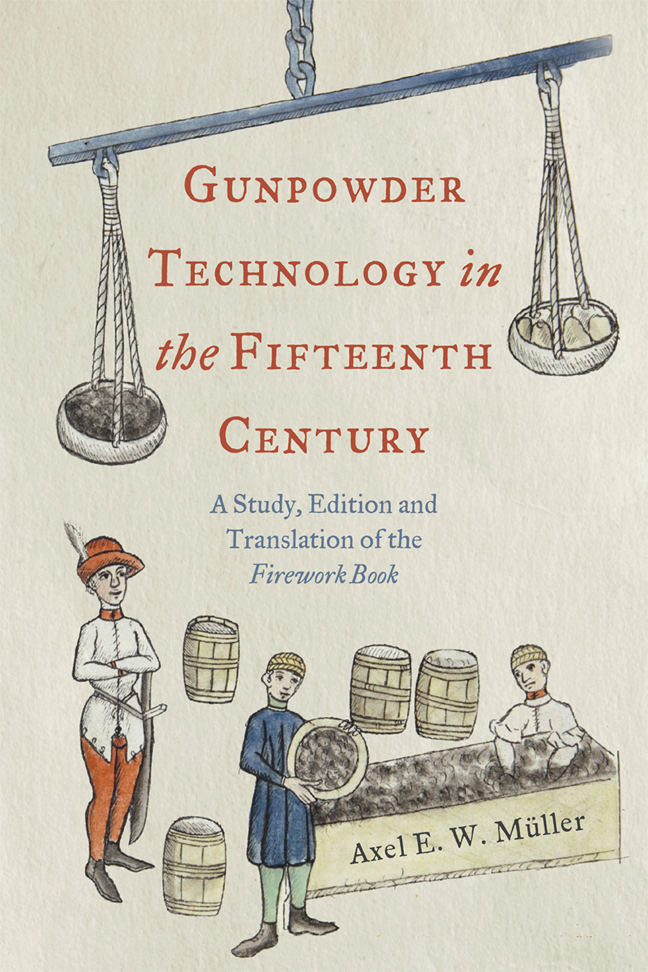 Gunpowder Technology in the Fifteenth Century
Gunpowder Technology in the Fifteenth Century Introduction
Published online by Cambridge University Press: 21 February 2024
Summary
Gunpowder technology has often been identified as one of the key catalysts for the transition from the Middle Ages to the Early Modern Period. By 1620, the natural philosopher Francis Bacon had placed gunpowder as one of the tripartite symbols of technological advancement: ‘Printing, gunpowder, and the compass. For these three have changed the appearance and state of the whole world.’ As Kay Smith put it in 2010, regarding
[…] the crucial role that gunpowder played in the development of the exploitation of energy resources from ancient times to the present. It marks the beginning of the change from animal, mechanical, or natural sources of energy […] to the apparently unlimited power and mobility of chemical energy.
However, when and how gunpowder technology emerged and spread to all corners of Europe in the fourteenth and fifteenth centuries is far less clear.
Gunpowder's early origins in China are well-known, but we know surprisingly little about how this technology was transferred across Eurasia, and even less about the way that early gunpowder weapons performed in practice. This lack of understanding has had a significant effect on research into warfare in the late medieval and early modern period. Kelly DeVries and Kay Smith list a number of guns and gunners from 1326 onwards, and by the fifteenth century gunpowder artillery ‘had led to significant changes on battlefields and at sieges’ and ‘affected every kingdom and principality’. Surviving records of master gunners are sparse from the late fourteenth century, becoming increasingly more substantial by the mid-fifteenth century, but still only amount to a patchwork of individual mentions of gunners in widely dispersed employment across Europe. While the Tower of London recorded gunpowder production from 1346, increasing considerably between 1400 and 1410, the records say very little about purchase, storage, maintenance, and use. In recent decades, scholars have become aware of both the gap in knowledge and the social history potential of gunpowder technology. For example, in 1996 Brenda Buchanan pointed out:
The history of gunpowder making is a comparatively neglected subject, yet this was a technology of international significance in terms of the intellectual transfer of ideas and techniques, and the practical transfer of raw materials and finished goods across continents and oceans. Unlike many industries its product supplied a diversity of markets which mirrored the cultural, social, and economic conditions in which it flourished.
- Type
- Chapter
- Information
- Gunpowder Technology in the Fifteenth CenturyA Study, Edition and Translation of the <i>Firework Book</i>, pp. 1 - 9Publisher: Boydell & BrewerPrint publication year: 2024
